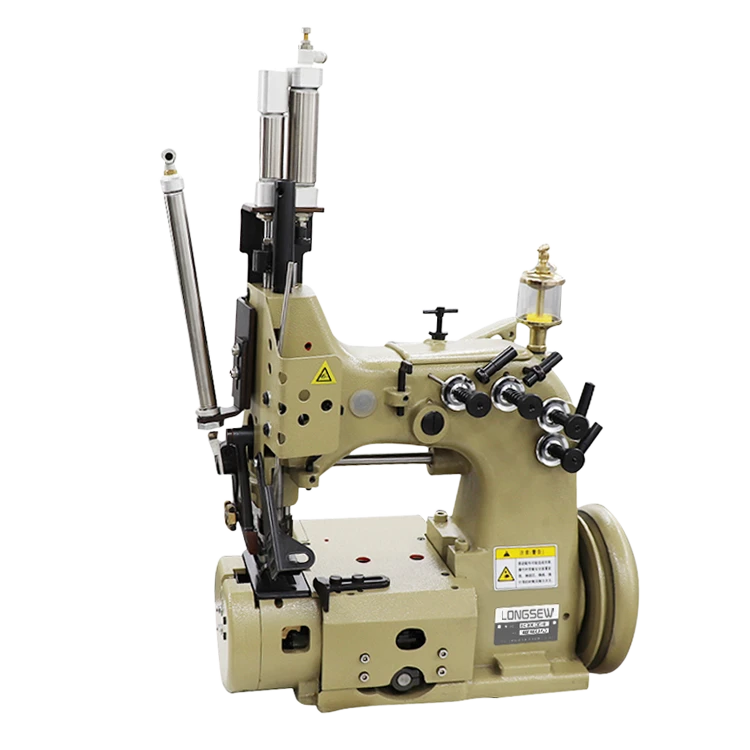chain sewing machine
The Evolution and Importance of Chain Sewing Machines
In the world of textiles and garment manufacturing, chain sewing machines have carved out a unique niche. Known for their efficiency and versatility, these machines play a pivotal role in the production process of various fabric-related items. From clothing to upholstery, chain sewing machines have become a cornerstone in the industry, thanks to their specialized design and functionality.
What is a Chain Sewing Machine?
A chain sewing machine is distinct from traditional lockstitch sewing machines in that it uses a chain stitch mechanism to create seams. This type of sewing is accomplished by interlocking a needle thread with a looper thread, resulting in a stitch that is stretchable and often used in areas subject to strain. The chain stitch is particularly effective for sewing knit fabrics, making it a go-to option for manufacturers of sportswear and activewear.
Historical Context
The development of the chain stitch sewing machine can be traced back to the 19th century, during the Industrial Revolution when mass production became essential. Early machines allowed for the faster production of garments, significantly reducing labor time and costs. Over the decades, advancements in technology have led to enhanced models capable of executing a variety of stitching techniques.
By the mid-20th century, chain sewing machines had become increasingly sophisticated, incorporating electric motors and automation, which further boosted efficiency and precision in garment production. Today, the latest models are equipped with programmable features and computerized controls, allowing manufacturers to produce intricate patterns and designs with minimal labor input.
Advantages of Chain Sewing Machines
One of the primary advantages of chain sewing machines is their speed. These machines can sew long continuous stitches quickly, making them ideal for high-volume production environments. The ability to produce a durable and flexible seam is also crucial, particularly in garments designed for movement and comfort, as found in sportswear and active apparel.
chain sewing machine

Moreover, chain stitch sewing machines are adept at handling a variety of fabrics, from lightweight materials to thicker textiles such as denim. Their adaptability allows manufacturers to create a diverse range of products, from clothing to quilts and upholstery.
Applications in the Textile Industry
Chain sewing machines are versatile and have a wide array of applications. In the apparel industry, they are commonly used to produce t-shirts, activewear, and swimwear due to their stretchable seam capabilities. Additionally, they are valuable in home furnishings, used to assemble items such as curtains and bed covers where durability and flexibility are desired.
In the automotive and aerospace industries, chain sewing machines are also employed to stitch upholstery and other fabric components, where strength and resilience are essential. The ability to create seams that can withstand significant stress makes these machines indispensable in ensuring product longevity.
Challenges and Future Trends
Despite their advantages, the chain sewing machine industry faces challenges, particularly concerning labor costs and training. As the global market shifts towards automation and innovations such as sewing robots become more prevalent, traditional sewing skills may dwindle. However, there is an ongoing demand for skilled operatives who understand the nuances of sewing techniques to ensure quality control.
Looking to the future, the integration of smart technology and IoT (Internet of Things) into chain sewing machines is anticipated. These advancements may lead to even higher levels of efficiency and precision, while data analytics could allow manufacturers to optimize their production lines effectively.
Conclusion
In conclusion, chain sewing machines represent a significant technological advancement in the textile and garment manufacturing industry. Their ability to create strong and flexible seams has enabled the production of a wide array of garments and products that cater to the needs of contemporary consumers. As technology continues to evolve, so too will the chain sewing machine, ensuring that it remains a vital tool in the textile industry for years to come. With innovations on the horizon, the future of chain sewing machines looks promising, solidifying their role as an indispensable asset in manufacturing.
-
Industrial Cylinder Arm Sewing Machine: Revolutionizing Heavy-Duty SewingNewsJul.28,2025
-
Cylinder Arm Sewing Machine: Perfect for Special Sewing ApplicationsNewsJul.28,2025
-
Cylinder Bed Sewing Machine: Essential for Sewing Complex MaterialsNewsJul.28,2025
-
Heavy Duty Sewing Machine: The Essential Tool for Industrial ApplicationsNewsJul.28,2025
-
Computerized Pattern Sewing Machine: Revolutionizing Precision StitchingNewsJul.28,2025
-
Heavy Duty Industrial Sewing Machine: Power Meets PrecisionNewsJul.28,2025
-
Leather Sewing Machine: The Industrial Standard for Tough MaterialsNewsJul.18,2025





























